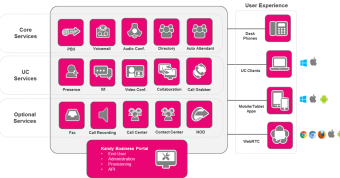Is the Software Evolution of Telecom Now A Revolution?
Is the Software Evolution of Telecom Now A Revolution?
The Next, Next Generation of Software Driven Networking & Real-Time Communications
The acceleration of change in the real-time communications industry in 2014 has become exponential. GENBAND works with many of the largest and most innovative service providers and enterprises in the world, and so has an interesting view of how these leaders are transforming their networks and infrastructure as software continues to connect the world.
The urgency driving what has arguably been a steady evolution into an all-out revolution is the incredible success of applications that make businesses stronger and lives better, many of those rich multimedia applications which are being enhanced by embedded human communications capabilities.
We are surrounded and immersed in our digital lives, addicted to our smartphones, smart TVs, high definition tablets, all the way up to massive interactive video walls and kiosks that are enabling “conversations” between brands and their consumers, businesses and businesses, and internal and external teams. “Events” are happening constantly, with the pervasive growth of the Internet of Things, M2M, and what we like to call M2M2H – machine to machine to human real-time interactions.
These “forces of change” are exciting and at the same time challenging to service providers who need to keep sessions flowing while upgrading their networks, and making decisions about which approaches to wind down and eventually abandon, and which technologies to embrace, invest in and develop to stay competitive and profitable. In only a few decades, we have as an industry experienced the software movement starting with the publication of the OSI Reference Model, or OSI stack, in the early 80s with CCITT and ISO collaboration. This 7-layer model of a telecom networking system has since been used by hardware and software developers to help clarify the roles performed by each of the components in the network and the overall functioning of the network.
Around the same time (early 80s), TCP/IP was introduced as the standard networking protocol on the ARPANET. Still, the technologies of that pre-2000 era still required had a heavy reliance on custom or proprietary hardware for optimal performance of multiple layers of the stack with the software for those layers running on the custom hardware.
Fast forward to today and the telecom world has changed dramatically!
- Hardware performance has continued to exponentially increase, following Moore’s Law at a constant rate and becoming commoditized and being referred to as COTS (Common Off The Shelf servers)
- IP technology and the Internet are ubiquitous with broadband access
- Powerful end-user smart devices are widespread and services have moved consumption from voice only to multimedia
- Consumers have fallen in love with OTT services and are consuming them for social, entertainment, search, information etc. and marketers of these services have followed suit
- Cloud is now an inherent strategy to all technology companies for its ubiquitous nature in terms of universal service access from anywhere at any time and “as a Service” business models have proliferated
- NFV and SDN combined with cloud promise to bring agility and optimal operation to telecom networks
- The Web with WebRTC technologies being used as another ubiquitous access mechanism for communications
It’s All about Software
All of this innovation, progression and creation of value has been enabled by software as the intelligence in the network. Software and software stacks are everywhere, in devices, the access layer, the network layer and most importantly in the applications layer for networking, business and operations. The “Next Next Generation” will be completely driven by software.
In my next post, I’ll share a new vision for the “Applications Layer” and what we’re calling “Outcome-as-a-Service.”




